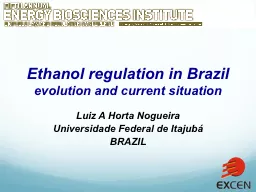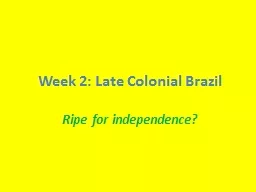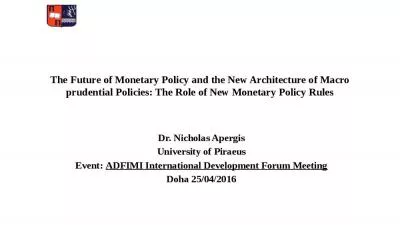PPT-BRAZIL’S CURRENT MONETARY
Author : lindy-dunigan | Published Date : 2019-11-25
BRAZILS CURRENT MONETARY POLICY DILEMMAS Edmar L Bacha Bank of Israel April 14 2011 Brazils macroeconomic policy framework Central Bank status and functions Economic
Presentation Embed Code
Download Presentation
Download Presentation The PPT/PDF document "BRAZIL’S CURRENT MONETARY" is the property of its rightful owner. Permission is granted to download and print the materials on this website for personal, non-commercial use only, and to display it on your personal computer provided you do not modify the materials and that you retain all copyright notices contained in the materials. By downloading content from our website, you accept the terms of this agreement.
BRAZIL’S CURRENT MONETARY: Transcript
Download Rules Of Document
"BRAZIL’S CURRENT MONETARY"The content belongs to its owner. You may download and print it for personal use, without modification, and keep all copyright notices. By downloading, you agree to these terms.
Related Documents














